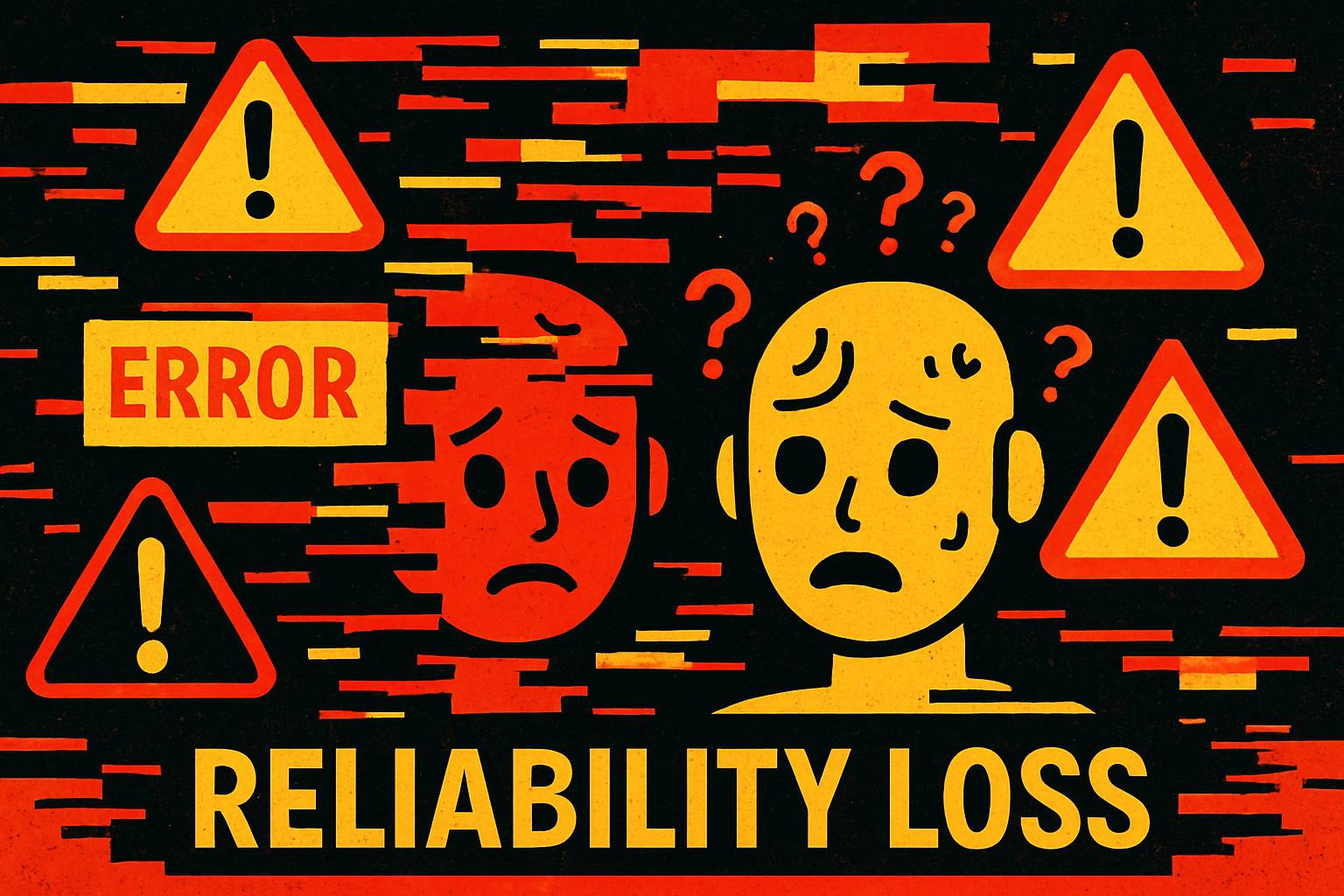
AI CERTS
2 days ago
ING warns of looming hallucination crisis
Consequently, analysts fear reliability degradation may undermine emerging AI driven business models. Moreover, it highlights new benchmarks that quantify progress yet still expose stubborn gaps. By the end, readers will gain actionable guidance to confront the looming instability. Meanwhile, potential certifications offer structured paths to strengthen internal governance. Therefore, stay with us as we dissect the data behind the headlines.

Why Concerns Escalate Now
ING positioned its November 19 publication within a broader market narrative of soaring adoption. However, usage growth outpaces safeguards, intensifying the hallucination crisis for unprepared enterprises.
EBU data shows assistants now refuse only 0.5% of questions, down from 40% two years earlier. Consequently, total answer volume rises, yet the 40% false claim rate persists across high traffic domains. Moreover, analysts detect an error increase over time as vendors push faster releases. The evidence suggests a confidence-fluency bias, where polished language masks latent inaccuracies.
Nevertheless, some executives still benchmark success solely on engagement metrics. This mismatch between perception and performance sets the stage for cascading reliability degradation. High adoption without matching safeguards magnifies systemic vulnerability. Consequently, leaders must interrogate the underlying research before scaling deployments.
Research Data Snapshot Today
The BBC-EBU study offers the most granular cross-market lens available. Additionally, researchers evaluated 3,113 queries across 23 languages using consumer versions of five assistants. They found significant issues in 45% of answers, spotlighting the hallucination crisis with sobering precision.
In contrast, the FACTS Grounding leaderboard concentrates on whether responses cite an explicit document. Top models scored near 90%, yet performance dropped sharply outside constrained contexts. Therefore, both datasets confirm the error increase over time highlighted by ING.
Meanwhile, Gemini displayed the highest sourcing problems, with 72% of answers lacking verifiable citations. Perplexity and ChatGPT also struggled, though their significant issue rates hovered near 30%. Key headline numbers deserve special attention:
- Hallucination crisis impacts 45% of evaluated answers
- 31% sourcing problems, the largest category
- 20% accuracy faults involving incorrect quotes
- 0.5% refusal rate, indicating near universal answering
- Up to 40% false claim rate referenced by ING
Collectively, these figures quantify the scale of reliability degradation confronting users. Consequently, risk managers must translate raw metrics into concrete business implications, addressed next.
Business Risks Amplified Globally
Misinformation can erode brand equity within hours. Moreover, regulators increasingly penalize companies that amplify unverified claims. The hallucination crisis raises unique legal and financial exposures for industries handling sensitive data.
For instance, a healthcare startup refunded clients after an assistant fabricated dosage guidance. Additionally, publishers risk traffic diversion when assistants answer directly yet inaccurately. ING warns that reliability degradation could dent investor confidence, especially during volatile earnings cycles.
Market reporters already link the November 19 publication to minor tech sector sell-offs in late November. Consequently, perceived growth premiums decline whenever evidence of a 40% false claim rate resurfaces. Nevertheless, strategic governance frameworks can contain downside. Unmitigated hallucinations translate directly into revenue, legal, and reputation losses. Therefore, the next section explores emerging countermeasures.
Mitigation Strategies Emerging Rapidly
Developers now prioritize grounding to source documents when stakes are high. In contrast, confidence-based deferral instructs models to admit uncertainty rather than guess. Fact-checking teams deploy retrieval augmented generation pipelines to shrink the hallucination crisis footprint.
Furthermore, several enterprises adopt human-in-the-loop review for outputs exceeding risk thresholds. A multilayer approach proves essential because the error increase over time shows little sign of plateauing. Meanwhile, BBC-EBU recommends transparent citation links and standardized attribution labels.
Professionals can enhance governance skills with the AI Ethics Professional™ certification. The program covers policy design, risk quantification, and audit workflows. Layered technical and organizational controls jointly reduce exposure. Consequently, stakeholders also require reliable measurement tools.
Benchmarks And Key Limitations
Quantitative tests remain vital, yet each benchmark has blind spots. The BBC-EBU corpus emphasises news integrity, while FACTS focuses on document grounding. Therefore, scores cannot be compared directly without contextual adjustment. Nevertheless, combined insights still illuminate the ongoing reliability degradation trajectory.
Grounding Benchmarks Show Progress
FACTS leaderboard results suggest measurable improvement among top Gemini variants. However, the 40% false claim rate persists when context retrieval fails. Subsequently, ING analysts caution that headline progress may mask an error increase over time in real usage. Moreover, benchmark tasks rarely measure multilingual performance, a gap noted by public service broadcasters. Consequently, overlooked languages could experience a silent hallucination crisis of their own. Benchmark diversity matters because single metrics cannot capture the full hallucination crisis scope. Therefore, executives should interpret scores alongside qualitative field observations.
Actionable Steps Forward Now
Leaders can follow a structured roadmap to limit fallout. First, mandate risk classification for every planned use case. Second, integrate grounded retrieval and confidence gating into production workflows. Third, schedule quarterly audits to track any error increase over time.
Additionally, publish incident reports internally to reinforce accountability. Meanwhile, continuous staff training embeds habits that directly combat the hallucination crisis. Finally, enroll senior managers in the AI Ethics Professional™ pathway to formalize oversight. These measures reduce missteps while sustaining innovation velocity. Consequently, organizations can capitalize on AI advances without aggravating systemic weakness.
Generative AI delivers speed, insight, and flexibility. However, unchecked hallucinations threaten to erode those gains. ING's November 19 publication crystallizes the stakes for decision makers worldwide. Nevertheless, grounded design, layered review, and ethical training can curb exposure. Moreover, organisations that proactively address the hallucination crisis will secure competitive trust advantages. Therefore, assess current workflows, benchmark regularly, and close identified gaps immediately. Explore the linked certification to build a robust foundation for responsible AI governance today.



